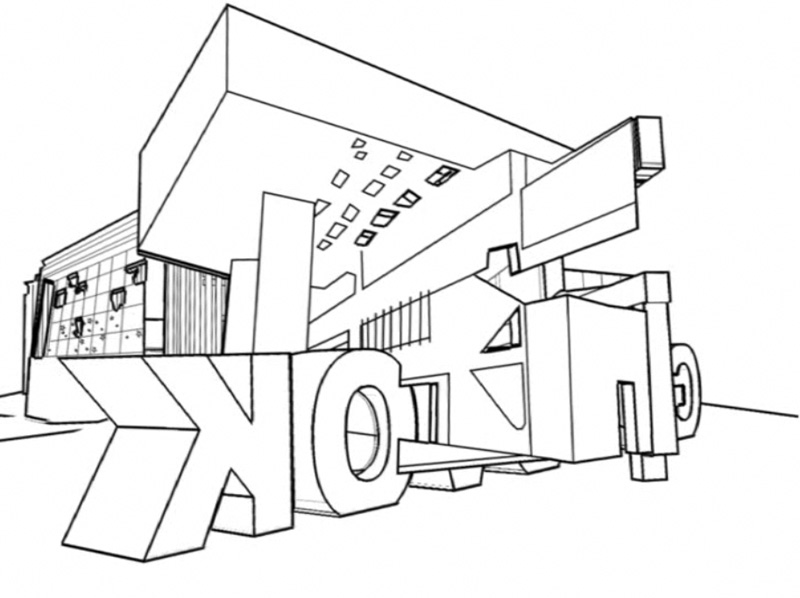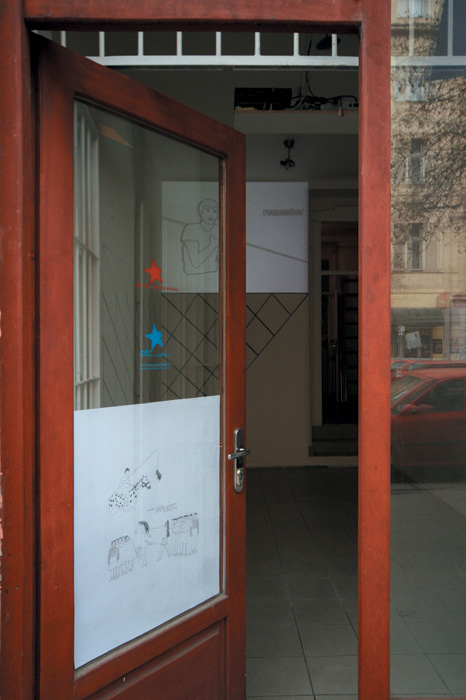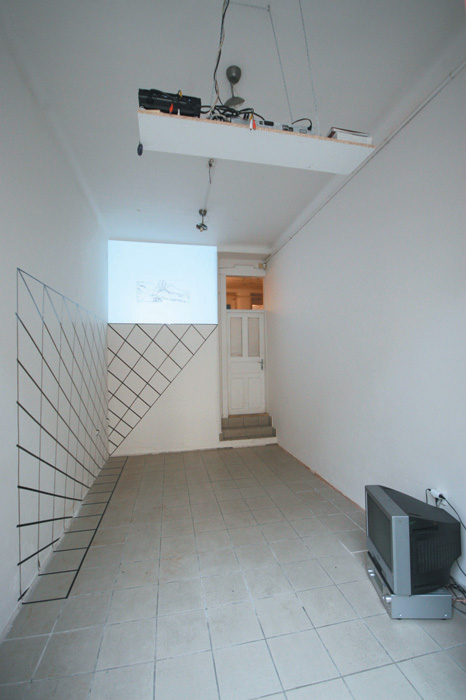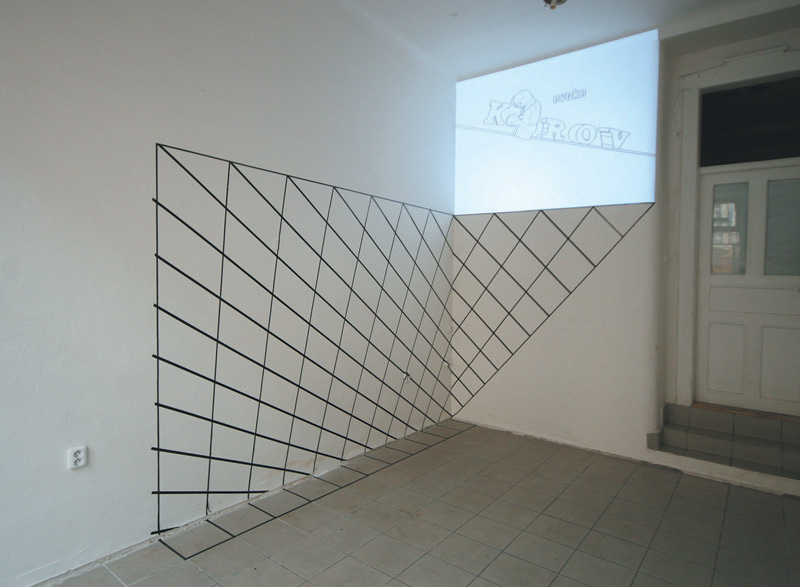

December 2006
Berlin based artist Elise Florenty developed a new installation responding to the architecture of the gallery space of etc. gallery. The drawing on the wall refers to a 1931 cover design by Ladislav Sutnar. With a vanishing point looking to the future, the drawing reflects the ideas of constructivism. It carries on the main questions posed in the videos about illusions of perspective, uncertain grounds and nomadism.
Projected above the drawing, the artist shows a collection of her latest works, one after the other. Kino Krov ("cinema blood") was inspired by the book "The Man with a Shattered World" by the Russian neurologist Alexander Luria. One day, he convinced one of his patients to put down his trauma in writing. The patient started to write a journal, which was published in excerpts under the title "I'll Fight On." Using this text as a starting point, the film creates the experience of having a pathological relationship with the world: everything is perceived to be in ruins and under threat of a terrifying catastrophe. Batk'a, It's All That My Russian Is Capable Of circles around the question of how to translate a Byelorussian patriotic song. The video introduces and confronts different interpretations. In a contradictory way, feelings of suspicion and treason underline some parts of the song. Ring-A-Ring-A-Roses refers to the old English song of the same title and the German fairy tale of "The Pied Piper of Hamelin". The video gives a hypnotic vision of the effects created by the plague virus which affected all of Europe.
The projection is juxtaposed with the new video Lines, Circles, Stars, a homage to the "all over the world" reporter Erwin Kish who created literary journalism. The video shows pictures of nomadic people (most of them acrobats) in Germany, China and the United States. The American ones are taken from Charlie Chaplin's film "The Circus" from 1928. Chaplin and Erwin Kish met in 1930. The crumpled star at the end of the movie is an allusion to the logo of the gallery.
In the street window she puts up a drawing with the sentence Go to find happiness and don't come back empty-handed. The drawing shows two unrealistic horses: one surrealistic (taken from the silent movie "Happiness" by Alexandre Medvedkine, 1934) one fake (taken from a propaganda photograph of theatre in a gulag), evoking a nomad in the pursuit of happiness, and what he finds along the way.
Antje Weitzel, 2006




© 2007, etc. galerie
Kateřinská 20, Praha 2, Czech Republic / info@etcgalerie.cz
